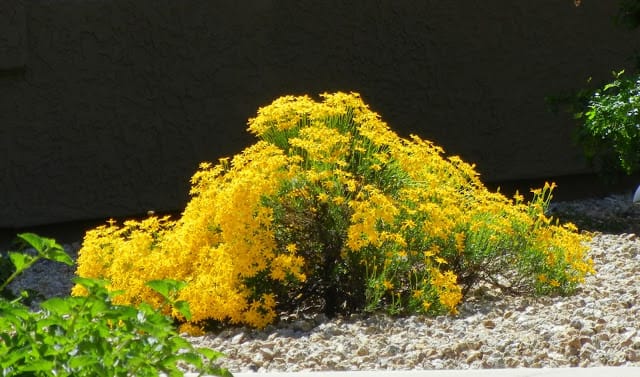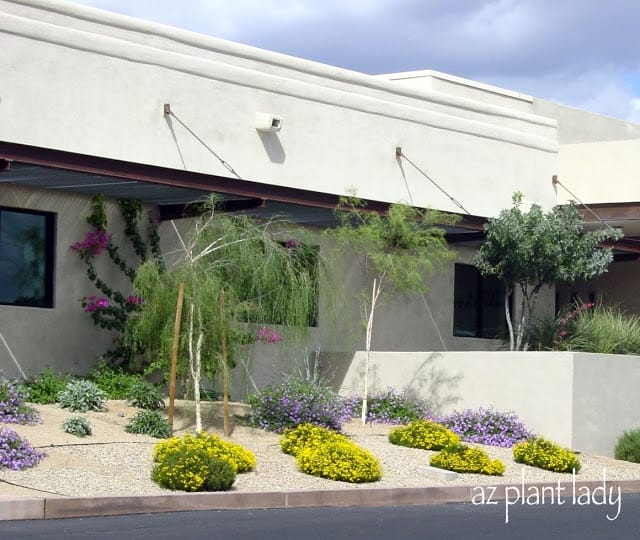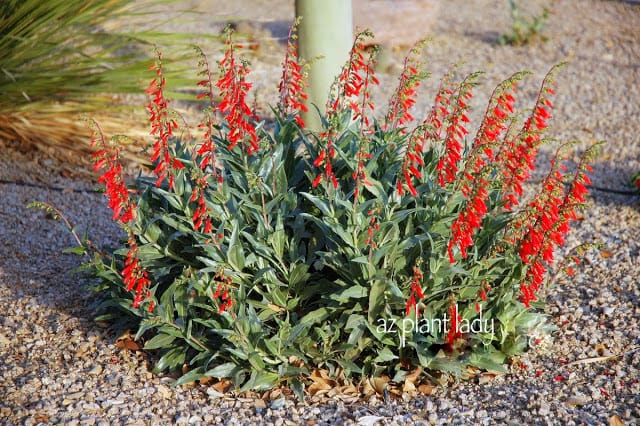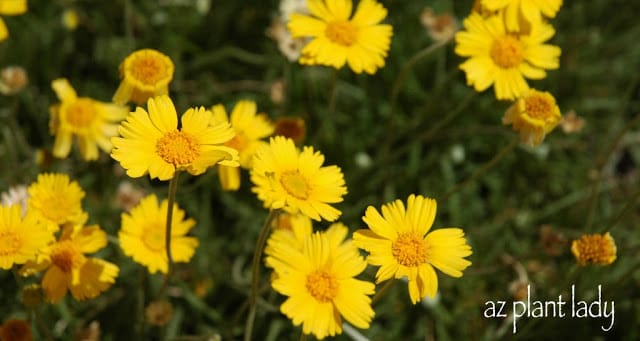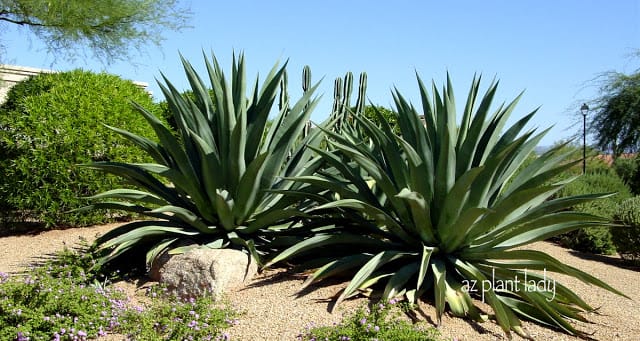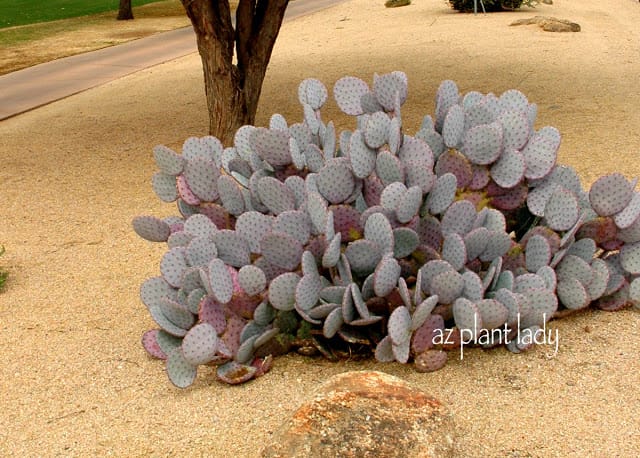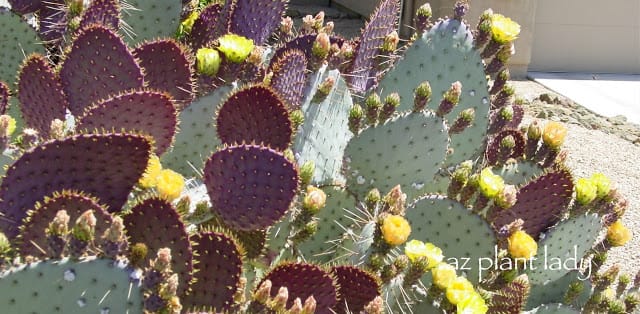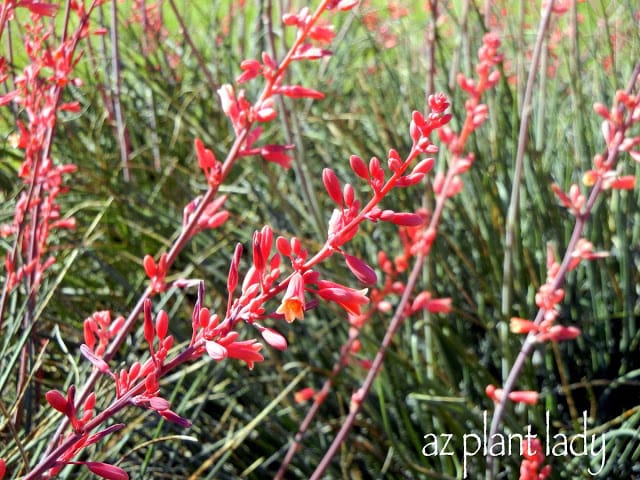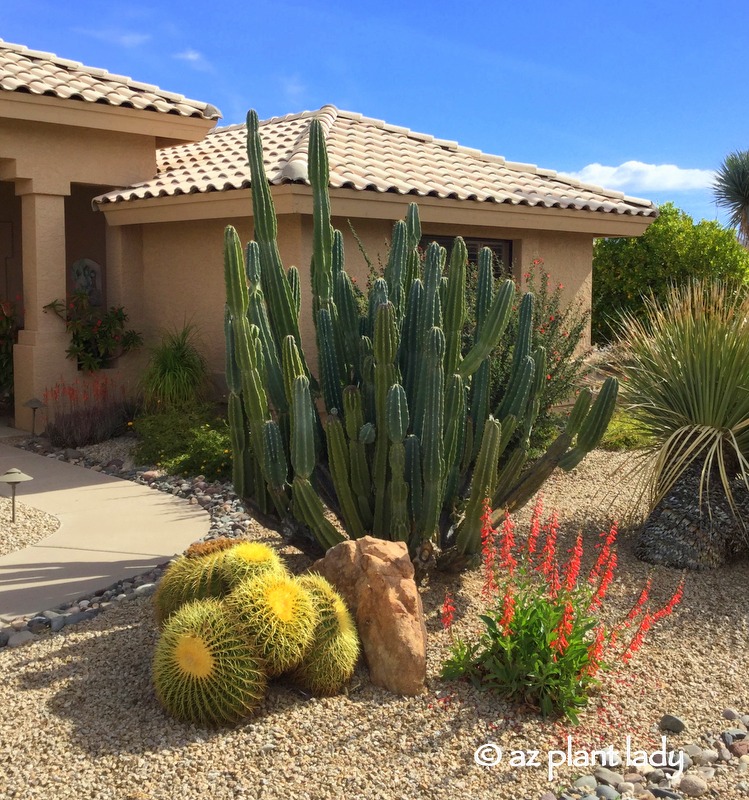
Cereus cactus, golden barrel cactus, and firecracker penstemon
From Drab to Colorful: A Landscape Transformation Story
Is your outdoor space looking rather drab? If so, you aren’t alone – many landscapes can appear somewhat dull, especially if there is a lack of color. But, it doesn’t have to stay that way.
One of my favorite aspects of my job as a landscape consultant is to help my clients to transform their garden from drab to colorful and it is quite easy to do.
Revisiting a Landscape Transformation: Two Years of Colorful Growth
I invite you to join me as I revisit with a client two-years after I created a planting plan for her existing, lackluster landscape.

BEFORE – Corner of Driveway
Transforming the Driveway Corner: Adding Color and Texture
Initially, this area did little to add to the curb appeal of the home. Overgrown red yucca plants and a cholla cactus created a ‘messy’ and boring look to this high-profile spot in the landscape.

AFTER
Removing the old plants and adding angelita daisy (Tetraneuris acaulis) and gopher plant (Euphorbia biglandulosa), creates colorful interest while adding texture. Before, the boulders were hidden behind the overgrown plants, so now they serve as an excellent backdrop for the new additions.
Symmetry and Year-Round Color: Anchoring the Driveway Corners
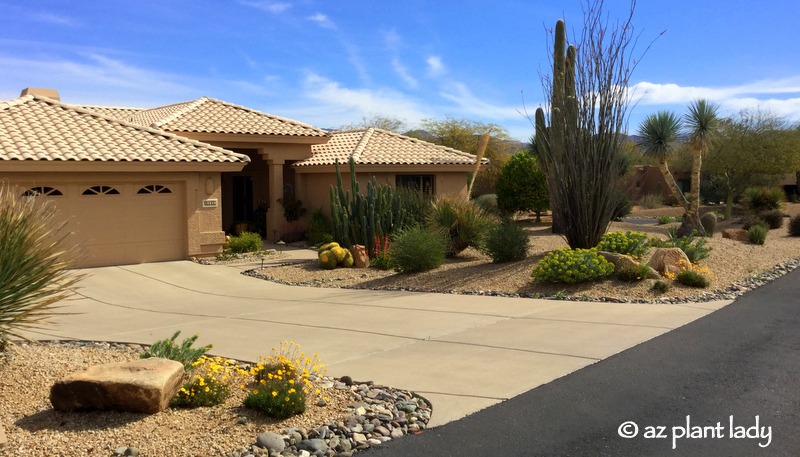
The corners of the driveway are one of the most viewed spots in the landscape and are often the first part people see when they drive by. It’s important to anchor them visually with plants that look great all year and preferably produce colorful flowers or have an attractive shape or color. I always like to add boulders to help anchor both corners as well.
These areas are also critical in that they create symmetry, connecting both sides of the landscape, which is done by using the same types of plants on each side.
A Burst of Color by the Entry: Enhancing Year-Round Appeal
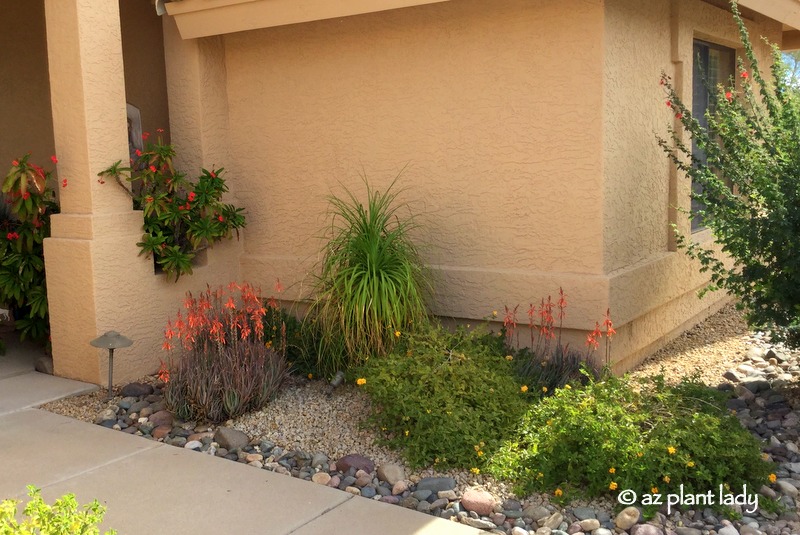
Although there is no ‘before’ photo for the entry, here is an example of plants that will add year-round color because of their overlapping bloom seasons. ‘Blue Elf’ aloe blooms in winter and on into early spring while ‘New Gold Mound’ lantana will flower spring through fall, as the aloe fades into the background. A ponytail palm (Beaucarnea recurvata) brings a nice vertical element to this spot and will grow taller with age.
Adding Color to the Entry Path: Transforming a Desolate Space

BEFORE (Landscape Transformation)
Along the front entry path, a tall cereus (Cereus peruvianus) cactus adds a welcome vertical element while the golden barrel cactus (Echinocactus grusonii) creates excellent texture contrast. However, something is missing in this area, in my opinion.

AFTER (Landscape Transformation)
A colorful element was what was missing in this area. A single firecracker penstemon (Penstemon eatonii) adds beauty while also attracting hummingbirds.
Corner Landscape Transformation: Bringing Beauty to an Overlooked Space

BEFORE (Landscape Transformation)
On the corner of this lot was a palo brea tree with a large desert spoon and turpentine bushes. Overall, there was nothing exciting in this spot before the landscape transformation.
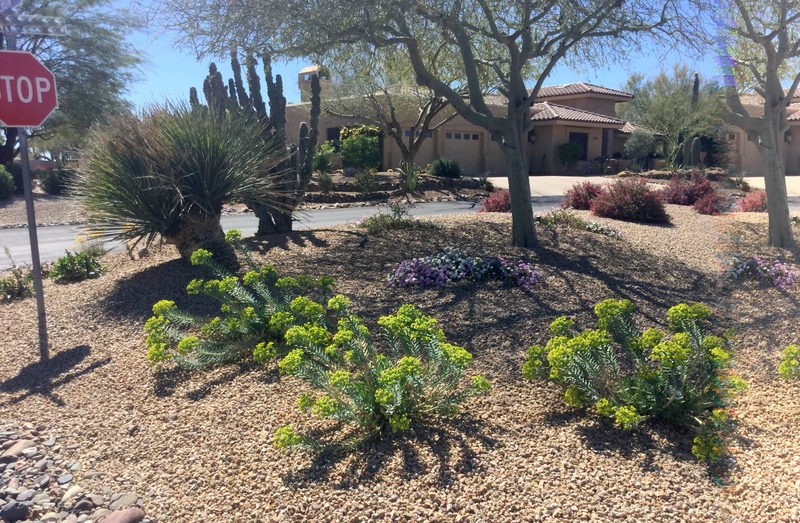
AFTER (Landscape Transformation)
The turpentine bushes were removed to make way for a set of gopher plants, which served to tie in this corner of the garden with the areas next to the driveway. These succulents flower in spring and add nice spiky texture throughout the rest of the year.
Creating a Colorful Carpet: Enhancing Warm Months with Lantana
Purple and white trailing lantana (Lantana montevidensis) serve to create a colorful carpet throughout the warm months of the year. This type of lantana can struggle in full sun in the middle of summer in the low-desert garden but, thrive underneath the filtered shade of a palo verde tree.
When working with an existing landscape, I relish the challenge of determining what existing plants still add beauty to the outdoor space, or have the potential to if pruned correctly. Sometimes an ugly, overgrown shrub can be transformed into something beautiful if pruned back severely. Often, it’s up to me to decide what goes and what stays. Then, the real fun part begins, which is selecting what areas need new plants and what ones will work best.
Landscape Transformation: Less Is More
I find that many people think that to renovate a landscape, you need to get rid of most of the plants and put in a lot of new ones. But, this is rarely the case. All you need to do is keep the plants that will continue to add to the curb appeal or create a beautiful, mature backdrop for new plants and new plants should be concentrated in high-profile areas where their impact will be maximized. Be sure to incorporate proper irrigation for the new plantings.
What would you like to get rid of in your landscape and what would you keep?

Noelle Johnson, AKA, ‘AZ Plant Lady’ is a horticulturist, landscape consultant, and certified arborist who lives and gardens in the desert Southwest. While writing and speaking on a variety of gardening topics keeps her busy, you’ll often find her outside planting vegetables, picking fruit from her trees, or testing the newest drought-tolerant plants.


